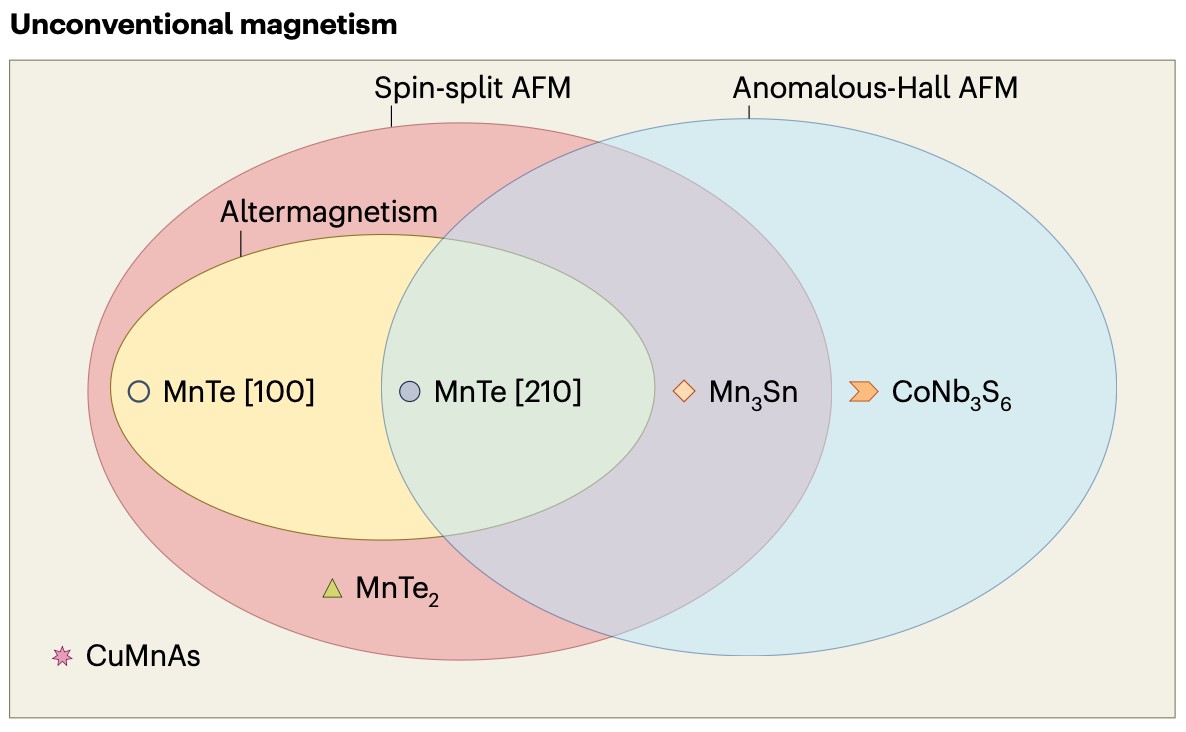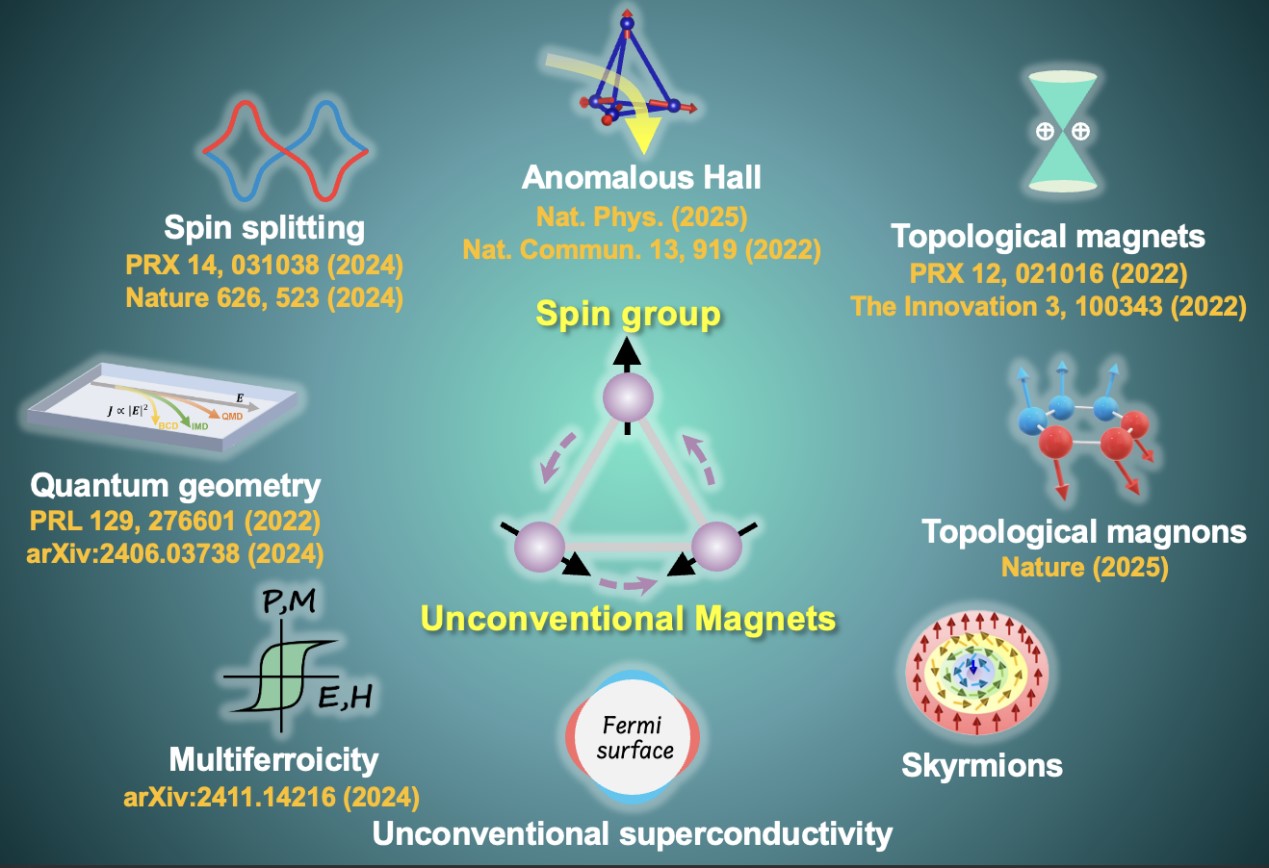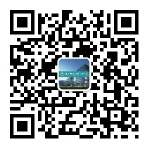Researchers make significant advancements in field of unconventional magnetism
2025-01-31
Since the emergence of antiferromagnetic spintronics, particularly the explosive growth of altermagnetism, its successful promotion has inevitably led to some conceptual ambiguity. This is especially evident in the relationship between spin-split antiferromagnets (including altermagnets) and anomalous Hall antiferromagnets. Therefore, within the background of integrating the advantages of ferromagnetism and antiferromagnetism, researchers from the Southern University of Science and Technology (SUSTech) propose a broader concept of unconventional magnetism. Unconventional magnetism is defined by its specific properties such as spin splitting, anomalous Hall effects, quantum geometry and topological properties. Each property possesses its own symmetry criterion based on spin space groups and their subgroups, along with corresponding material databases. They expect this theoretical framework to clarify current conceptual ambiguities and classification confusions in antiferromagnetic spintronics research, while inspiring further exploration of the field of unconventional magnetism.
Professor Qihang Liu’s research group from the Department of Physics at SUSTech has recently made progress in the field of unconventional magnetism, which is expected to integrate the advantages of both conventional ferromagnets and antiferromagnets.
Their work, entitled “Different facets of unconventional magnetism”, has been published in the journal Nature Physics.
The operating frequency of ferromagnetic devices is typically limited to the gigahertz (GHz) range. In contrast, antiferromagnetic materials have zero net magnetic moments, resulting in almost no stray fields and insensitivity to external fields. Additionally, the operating frequency of antiferromagnetic materials can reach the terahertz (THz) range, enabling atomic-scale density information storage. Nevertheless, the zero net magnetic moment of antiferromagnetic materials also makes their magnetic order difficult to detect and control. As a result, Louis Néel, the Nobel laureate who discovered antiferromagnetic materials, once described them as “interesting but useless”.
To address these challenges, scientists have proposed novel antiferromagnetic materials that combine the characteristics of ferromagnets with the configurations of antiferromagnets. These include spin-split antiferromagnets and anomalous Hall antiferromagnets. Spin-split antiferromagnets exhibit the antiferromagnetic feature of compensated zero net magnetic moments, but the spin space group symmetry between different magnetic sublattices breaks the non-relativistic spin degeneracy, resulting in the characteristic of antiferromagnetic spin splitting. This category includes altermagnets, where two opposite-spin magnetic sublattices in collinear antiferromagnets are symmetry-related through transformations such as real-space rotation, as well as non-collinear antiferromagnets with multiple perpendicular spin rotation axes absent in the spin translation group.
The symmetry criteria for spin-split antiferromagnets were comprehensively discussed in Qihang Liu’s group earlier work (Physical Review X 14, 031038 (2024)). In 2024, the group, in collaboration with Professor Chang Liu from the Department of Physics at SUSTech, discovered the spin-splitting phenomenon in the non-coplanar antiferromagnet MnTe2 for the first time, confirming the existence of such unconventional magnets (Nature 626, 523 (2024)). The related work has been selected as candidate entries for the “Top Ten Sci-Tech News of 2024 in China” (including the final selected entries, totaling 20 items) by the general assemblies of the members of the Chinese Academy of Sciences and the Chinese Academy of Engineering. In the same year, the discovery of altermagnets was recognized as one of the “2024 Breakthroughs of the Year” by Science.
Another class of materials that exhibit both the antiferromagnetic characteristic of zero net magnetic moment and ferromagnetic-like characteristics is anomalous Hall antiferromagnets. The anomalous Hall effect is typically associated with systems exhibiting time-reversal symmetry breaking and was historically considered exclusive to ferromagnetic materials with macroscopic magnetic moments. However, recently research has been discovered that certain antiferromagnetic systems permit the emergence of non-zero Berry curvature. These unconventional magnets include collinear and coplanar antiferromagnets with spin-orbit coupling (e.g., MnTe and Mn3Sn), as well as non-coplanar antiferromagnets that allow for the geometric Hall effect in the absence of spin-orbit coupling (e.g., CoNb3S6).

In three-dimensional collinear antiferromagnets, spin splitting requires the simultaneous breaking of both time-reversal combined with spatial inversion (PT) symmetry and spin-flip combined with lattice fractional translation (Uτ) symmetry. Meanwhile, the anomalous Hall effect necessitates the breaking of both PT symmetry and time-reversal combined with lattice fractional translation (Tτ) symmetry. Since these two conditions can be mutually transformed within the framework of collinear spin space groups, the rapid development of altermagnetism has led to ambiguity in the theoretical description and material selection for unconventional magnets with distinct properties. This has often resulted in the obscure understanding that “altermagnetism describes all antiferromagnets exhibiting ferromagnetic-like characteristics”.
This comment highlights the independent relationship between spin-split antiferromagnets and anomalous Hall antiferromagnets, clarifying the theoretical misconception of conflating different types of ferromagnetic behaviors in antiferromagnets under symmetry constraints. Spin-split antiferromagnets are characterized by spin space groups, which enable non-zero spin polarization at arbitrary wave vectors in momentum space. In contrast, anomalous Hall antiferromagnets are defined by magnetic space groups, allowing for a non-zero net magnetic moment in coordinate space.
In the context of searching for materials that combine the advantages of both ferromagnets and antiferromagnets, the unconventional magnetism concept proposed in the comment encompasses several cutting-edge topics in condensed matter physics. Beyond spin splitting and the anomalous Hall effect, these include quantum geometry, multiferroics, and topological magnets, offering new research directions for various fields in magnetism and spintronics.

Professor Qihang Liu is the first and sole corresponding author of this paper. Collaborators include Professor Xi Dai from the Hong Kong University of Science and Technology and Professor Stefan Blügel from the Forschungszentrum Jülich in Germany. SUSTech is the primary affiliation of the paper.
Additional contributions to this work were made by Dr. Yuntian Liu (now a postdoctoral researcher at the University at Buffalo, State University of New York), Dr. Xiaobing Chen (currently an associate researcher at the Quantum Science Center of Guangdong-Hong Kong-Macao Greater Bay Area (Guangdong)), and Professor Chang Liu.
Paper link: https://www.nature.com/articles/s41567-024-02750-3




